What's New
Displaying results 2141 - 2150 of 4899

Resource | Publications,
The PEPFAR program in Papua New Guinea (PNG), in collaboration with the leadership of the National Department of Health (NDOH), will focus on key policy-implementation to catalyze and bolster national and provincial HIV, key population (KP) and gender-based violence (GBV) work. The majority of PEPFAR PNG’s program will comprise of above-site with some site-level pilots in support of above-site activities. The program will work to reduce the costs of providing HIV services and increase the sustainability, quality and reach of proven interventions, while also piloting innovations for future scale-up and efficiencies. The PEPFAR PNG program will work with the NDOH to adopt and roll-out new policies for HIV prevention, care and treatment, and prevention and management of GBV.
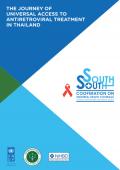
Resource | Publications,
This book represents the consolidated knowledge and experience related to the policies and management of universal access to ART in Thailand. It aims to serve as an important tool to share knowledge with and advocate the policy of universal health coverage (UHC) to policymakers in the other developing nations that are working towards achieving UHC inclusive of the continuum of HIV and AIDS care services.
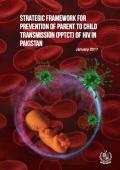
Resource | Publications,
This strategic framework provides a road map to scale-up prevention of parent to child transmission (PPTCT) services in the most efficient manner, where value for money is achieved with the promise that no infected mother will be missed and no child will be born with HIV, where every HIV exposed infant will receive the much needed HIV test at 6 weeks of age, and linked to treatment where required.
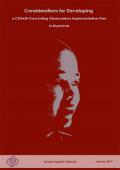
Resource | Publications,
The purpose of this report is to provide contextual background for Convention on the Elimination of All Forms of Discrimination against Women (CEDAW) issues and outline steps for the Government to take as part of a comprehensive Concluding Observations (COB) implementation plan. This report can be used as a building block for a comprehensive implementation plan for CEDAW recommendations as well as for an overall advocacy plan to advance women’s equality. It can also inform decisions regarding establishing advocacy priorities. This report must be considered within the context of gender equality advocacy and strategic planning already being done within Myanmar.
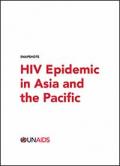
Resource | Reviews and Snapshots,
UNAIDS Snapshot 2016: HIV epidemic in Asia and the Pacific is an interactive report with colourful infographics and bite-size information on the HIV epidemic and response on key populations at higher risk of HIV in Asia and the Pacific.
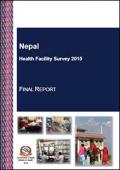
Resource | Publications,
The 2015 Nepal Health Facility Survey (NHFS) is an assessment of health care facilities in the formal sector of Nepal. It was designed to provide information on the availability of basic and essential health care services and the readiness of health facilities to provide quality services to clients. To provide a comprehensive picture of the strengths and weaknesses of the service delivery environment for each assessed service, the 2015 NHFS collected information from all facilities managed by the government and by private not-for-profit nongovernmental organizations (NGOs), private for-profit organizations, and mission/faith organizations in all 75 districts of the country.
The 2015 NHFS provides representative results for Nepal, for different facility types (public hospitals, primary health care centers [PHCCs], health posts [HPs], urban health centers [UHCs], standalone HIV testing and counseling sites [HTCs], and private hospitals), for different managing authorities (government and private), for each of the three geo-ecological regions in the country, and for the area affected by the 2015 earthquake (14 districts).
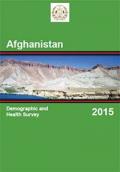
Resource | Publications,
The Afghanistan Demographic and Health Survey (AfDHS) 2015 is the first survey of its kind to be implemented in the country as part of the worldwide Demographic and Health Surveys (DHS) Program.
The 2015 AfDHS is a national sample survey that provides up-to-date information on fertility levels; marriage; fertility preferences; awareness and use of family planning methods; child feeding practices; nutrition, adult, and childhood mortality; awareness and attitudes regarding HIV/AIDS; women’s empowerment; and domestic violence. The target groups were women and men age 15-49 in randomly selected households across Afghanistan. In addition to presenting national estimates, the report provides estimates of key indicators for both the urban and rural areas in Afghanistan and the provinces.
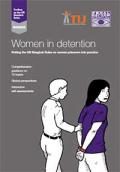
Resource | Tools,
More than 700,000 women and girls are held in prisons around the world. Women are always a small minority in national prison populations – only 2–9 per cent on average. However, their numbers are growing every year, and at a faster rate than for men.
In 2010, the United Nations adopted the Rules for the Treatment of Women Prisoners and Non-Custodial Measures for Women Offenders (the ‘Bangkok Rules’) to give guidance on how to meet the specific needs of women in prison.
Sensitisation and training is a key aspect of implementing the Bangkok Rules at a national level. This Workbook has been designed to support prison staff, policymakers, healthcare practitioners, representatives of intergovernmental and nongovernmental organisations, and other interested stakeholders, to put the Bangkok Rules into practice.
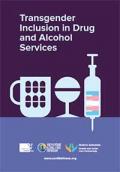
Resource | Publications,
This report details the findings of a survey conducted by the Scottish Trans Alliance into transgender inclusion in drug and alcohol services. The survey was open to any trans person living in Scotland.
The survey focused on three main areas; people’s use of alcohol or other drugs, the way in which their trans identity impacted on their use of alcohol or other drugs, and their concerns about approaching or experiences of using specialist services.
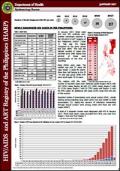
Resource | Fact Sheets,
In January 2017, there were 844 new HIV antibody seropositive individuals reported to the HIV/AIDS & ART Registry of the Philippines (HARP). This was 5% higher compared to the same period last year (804). This was the highest number of cases ever reported since 1984. Eighty-nine percent of those were asymptomatic at the time of reporting.





